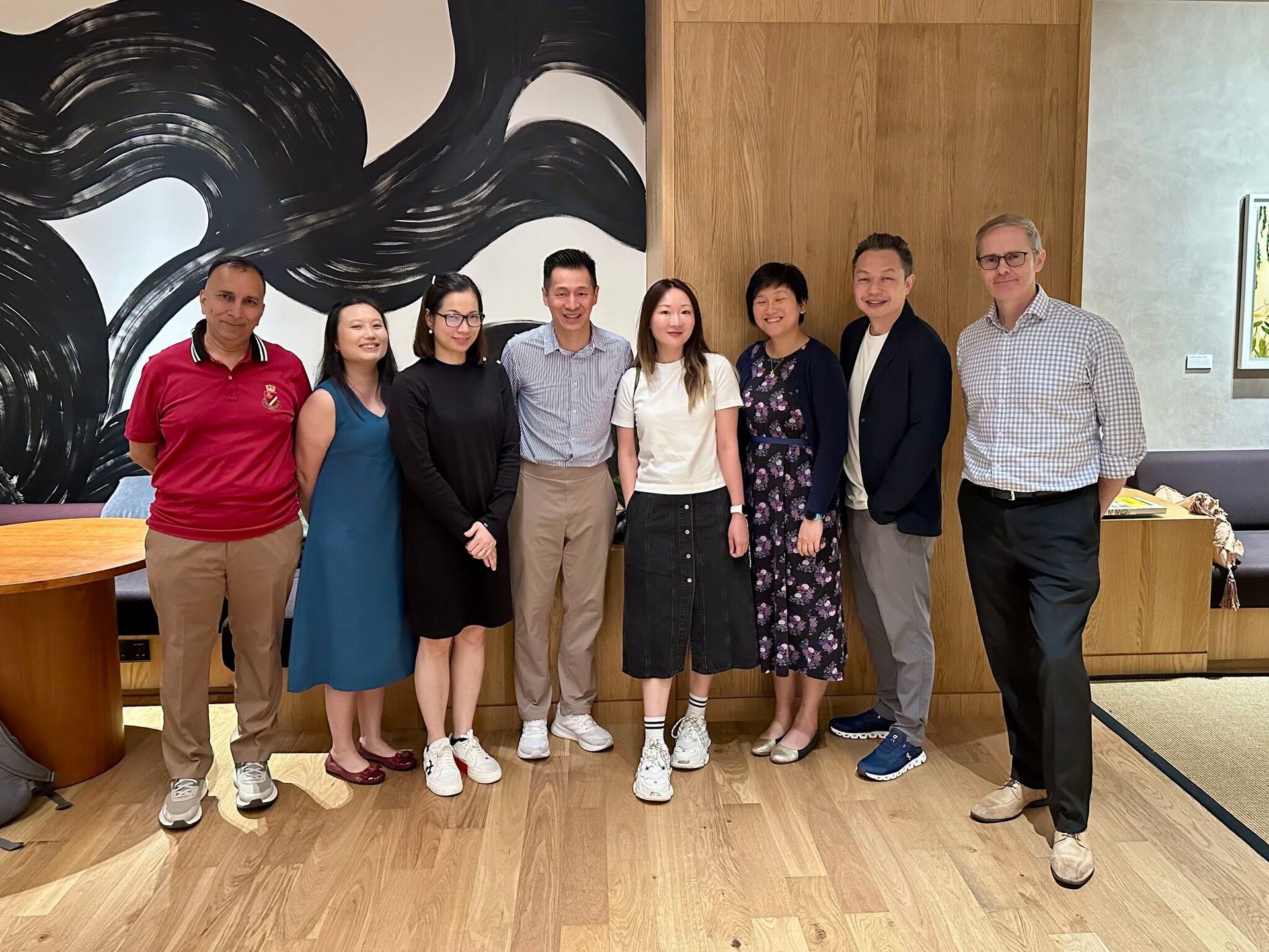English-Japanese Bilingual Professional Talent Market in Japan
Market Size & Segmentation
Overall Talent Pool
Japan's pool of English-Japanese bilingual professionals at Senior Manager level and above (¥15M+ annual pay) is relatively small in the context of Japan's workforce. Only about 1.4% of all employees in Japan earn over ¥15 million (roughly 730,000 people), and fewer than 20% of Japanese are bilingual in any language (even fewer at professional English proficiency). Combining these factors, the estimated bilingual talent at this senior/high-income level is on the order of only tens of thousands nationwide - a very limited supply.
Moreover, this group is overwhelmingly male - only ~0.5% of women earn ¥15M+ (vs 2.2% of men) - reflecting the low female executive representation in Japan. Most are mid-career to senior (often 40s and 50s), as significant experience is typically needed to reach these roles and salary levels.
Functional Segmentation
These bilingual executives and senior managers span multiple corporate functions, with particularly strong representation in roles that require global interaction or specialized skills:
General Management & Operations
Many hold positions as business unit heads, country managers, or operational directors driving Japan-based businesses for global firms. Over 80% of multinational companies' executive search mandates in Japan are for bilingual, bicultural leaders who can bridge Japanese and global practices. This creates a narrow candidate pool of talent who combine local market acumen with English fluency.
Sales & Business Development
A large segment is in client-facing roles. Companies expanding overseas or serving international clients need bilingual Sales Directors, Partnership Managers, and BD Managers. These roles are vital in sectors like technology, industrial manufacturing, and consumer goods to connect Japanese operations with global customers.
Marketing & Product Management
Marketing Directors and Product Managers with bilingual skills are in demand, especially in FMCG, retail, tech, and automotive firms that must localize global campaigns or develop products for both Japanese and international markets. Global branding efforts have driven demand for bilingual marketing leaders in Japan's consumer industries.
Engineering & Technical Management
In technology and manufacturing companies, Engineering Directors, R&D Managers, and IT Project Leaders form another key segment. Professionals who pair technical expertise with English fluency are highly sought after for leading global projects (e.g. coordinating with overseas R&D teams or implementing global IT systems). However, such individuals are scarce - Japan has a shortfall of IT professionals (projected up to 790k by 2030) and even fewer who are bilingual. This makes bilingual engineering managers "highly sought-after" talent by multinationals.
Finance & Accounting
Finance Directors, Controllers, and FP&A Managers with English skills are critical in both foreign and domestic companies for investor relations, regional reporting, and cross-border M&A. Bilingual Japanese finance professionals are highly sought after in Japan's financial sector. The financial services industry (banks, asset managers, insurers) employs many of these individuals, as do large multinational firms in other sectors that need local finance heads who can communicate with global HQ.
Human Resources & Corporate Services
Global companies also require bilingual HR Directors, Legal Counsel, and Strategy Directors. For example, nearly all senior HR positions at multinationals demand English fluency. While smaller in number, these roles are crucial for integrating global corporate culture into the Japanese office. Their candidate pool is limited - as one analysis notes, there is an "unprecedented lack" of executive-level talent in Japan, forcing companies into bidding wars for strong candidates in areas like HR.
Industry Breakdown
Bilingual senior talent is concentrated in industries with either a high degree of foreign business activity or global market orientation:
Technology (IT & Software)
This is one of the largest sectors for bilingual professionals. Japan's tech sector is growing and embracing global talent, with many companies adopting English as a working language. Cloud services, enterprise software, fintech, and telecommunications firms have aggressively hired bilingual managers (e.g. IT Directors, Product Managers) to drive digital initiatives. The demand surge is evident in roles like data science and cybersecurity, where bilingual experts are needed to implement globally sourced technologies.
Industrial & Automotive Manufacturing
Japan's manufacturing giants (automotive, electronics, machinery) historically had domestically focused management, but globalization and overseas operations have created demand for English-proficient leaders. Automotive firms (Toyota, Nissan, etc.) now groom more bilingual managers for overseas posts and international joint ventures. Similarly, manufacturers working with global supply chains seek Engineering Directors, Plant Managers, and Supply Chain Heads who can coordinate with international partners. For example, an Engineering Director in manufacturing can earn up to ~¥15 million, reflecting the value of this skill set. However, many traditional manufacturers still face a gap in bilingual leadership, making this an area of talent shortage.
Financial Services
Banks, securities firms, insurance companies, and asset management firms are a major employer of bilingual professionals. In Tokyo's finance hub, demand for bilingual talent is booming, particularly in investment and commercial banking and in emerging fields like fintech. Global banks and private equity firms hire Japanese nationals as senior relationship managers and directors who can navigate local clients and international teams. Domestic financial institutions expanding abroad (e.g. MUFG, Nomura) also promote English-proficient executives to lead overseas units. Roles such as Investment Director can command salaries around ¥15-20M, underscoring their value.
Life Sciences (Pharmaceuticals & Medical Devices)
The pharma/biotech sector has a high proportion of bilingual managers because most major pharma companies in Japan are either foreign-owned or collaborate closely with global headquarters. Medical Directors, Market Access Managers, and R&D Project Leads typically must be bilingual to liaise on global clinical trials and regulatory strategies. For instance, a Medical Affairs Director in a pharmaceutical company can earn up to ~¥15M. Despite the sector's moderate size, the percentage of roles requiring English is high. Talent shortages exist in niche areas like regulatory science, where few Japanese experts have the required English fluency and technical depth.
Fast-Moving Consumer Goods (FMCG) & Retail
Global FMCG firms (food & beverage, cosmetics, apparel) such as P&G, Unilever, or Nike have long operated in Japan and require bilingual Marketing Directors, Brand Managers, and Sales Executives. Even domestic retailers expanding e-commerce or tourism sales seek English-speaking leaders. Compensation for a Marketing Director in FMCG can reach the mid-teens in millions of yen. This industry segment values bilingual talent to craft campaigns that resonate both locally and globally.
Professional Services & Consulting
Multinational consulting firms, Big4 accounting firms, and law firms are key employers of bilingual Japanese at the senior level. They recruit engagement managers, partners, and senior consultants who are native in Japanese but also fluent in English to serve multinational clients. For example, law firm partners in Japan (often bilingual) can earn extremely high pay (¥50M+ range). While the numbers of such roles are smaller, the skill bar is high. These sectors often serve as feeders of talent into industry (e.g. consultants moving into in-house strategy roles).
Geographic Distribution
The vast majority (estimated ~70-80%) of bilingual senior professionals are based in Greater Tokyo, which is Japan's economic center and hosts most multinational company HQs. Tokyo's dominance is clear - it has seen the most pronounced growth in demand for bilingual talent, especially in finance and IT.
The Kansai region (Osaka, Kyoto, Kobe) accounts for perhaps 10-15% of this talent pool. Osaka is an important secondary hub, with many manufacturers and some foreign firms' offices; it is also experiencing a surge in demand for bilingual managers as it attracts more international business.
Nagoya (Chubu) has a smaller share (maybe 5-10%), focused mostly on the automotive industry and related manufacturing - global automotive suppliers around Nagoya need English-speaking managers, but outside those firms the bilingual market is limited.
Fukuoka and other regional cities comprise the remainder (under 5%). Fukuoka, for instance, is positioning itself as a start-up and tech hub and has begun drawing some bilingual tech talent. Still, opportunities in regions outside the big metropolitan areas are relatively scarce, and many bilingual professionals from those areas gravitate to Tokyo/Osaka for senior roles.
Language Proficiency & Demographics
Languages Beyond English
Nearly all professionals in this market are Japanese-English bilingual, since English is the lingua franca of global business. Other foreign languages are less common but can add value. Mandarin Chinese is the next most sought-after language, given China's importance to Japanese businesses (e.g. trading companies or manufacturers dealing with China). Those who speak Chinese or Korean in addition to English have "an even greater advantage in certain sectors".
For example, a Japanese senior manager who speaks Mandarin may be prized by firms with significant China operations, and Korean language skills can be useful in industries like electronics or gaming where Korea-Japan partnerships occur. Overall, however, English is the critical second language - it is essentially a baseline requirement for global roles. In fact, many job listings use "business English required" as a filter, and being bilingual in English is considered almost a given in the ¥15M+ tier of international positions.
Native vs Returnee vs Expat-like Talent
Within this talent pool, there is a mix of backgrounds:
Domestic Japanese (locally trained)
A portion gained their English skills through domestic education or on-the-job experience. They are native Japanese who attained high English proficiency via university studies, language programs, or working in English-speaking environments in Japan. Some domestic firms sponsor intensive language training or overseas short assignments to build this capability.
Returnees (Kikokushijo)
A significant share are returnee Japanese who spent formative years abroad (e.g. studied in a Western university or grew up overseas) and returned to Japan's job market. These individuals often have near-native English fluency and a bicultural mindset, making them ideal for roles requiring global coordination. Japanese companies highly value such study-abroad experience - nearly 80% of firms say overseas study is valuable for new hires' careers.
However, the pipeline of returnees has been shrinking. The number of Japanese students studying abroad peaked at ~83,000 in 2004 and has since declined to under 60,000 per year. Recent surveys show over half of young Japanese have no intention to study overseas, reflecting a decline in global exposure among youth. This trend is a concern for employers, as it means fewer fresh returnees to replenish the bilingual talent pool.
"Expat-like" Japanese
These are Japanese nationals with extensive overseas work experience or those who have adopted working styles similar to foreign expats. They might include people who spent a large part of their career at foreign subsidiaries or abroad and then came back (or are open to rotating internationally). They tend to be highly fluent and comfortable in global corporate culture. Companies sometimes repatriate Japanese talent from overseas to fill leadership roles domestically, essentially treating them as internal expats. This can help alleviate talent shortages by tapping experienced Japanese working abroad.
Naturalized/Heritage Cases
A very small subset might be Japan-born bilinguals of mixed heritage or naturalized citizens who grew up bilingual (e.g. one parent foreign). While not large in number, they also contribute to the talent pool, often gravitating to international companies where their dual cultural background is an asset.
Age Profile
Bilingual senior managers in Japan skew toward mid-career and senior ages. Many are in their 40s and 50s, especially in traditional industries where one must climb for decades to reach senior roles. For example, in domestic companies the average manager reaching a ¥15M salary could be in their 50s (since even the highest average incomes by age - men age 55-59 - are only around ¥7M in Japan).
In foreign-affiliated companies and fast-growing sectors like tech, there are also younger bilingual leaders in their 30s who advanced quickly. Overall, one can observe a bimodal distribution: some enter the ¥15M+ bracket relatively young by joining global firms (e.g. a 35-year-old senior engineer at a Silicon Valley tech firm's Japan office), whereas others reach it later via traditional corporate ladders.
The aging of Japan's population affects this talent pool as well - many of the highly fluent English speakers in senior posts are Baby Boomers or Gen X who benefited from earlier eras of abundant corporate training or study abroad in the 1980s-90s. As they retire in coming years, the generation behind them is smaller in size and arguably less internationally exposed, which could worsen the talent crunch.
Gender Breakdown
This market is heavily male-dominated, reflecting Japan's overall gender gap in management. Women comprise a small minority of those earning ¥15M+ (only ~0.5% of working women reach that pay vs 2.2% of men). In practical terms, perhaps 10-20% of the bilingual senior talent pool are female.
Those women who do reach senior roles tend to be exceptionally qualified (often with overseas experience). Industries like pharma, FMCG, and tech startups have comparatively higher female representation in leadership, whereas manufacturing and finance in Japan remain very male-heavy at the top.
There is some movement to improve this: many multinationals and progressive Japanese firms set diversity hiring goals and actively seek bilingual female leaders to join their ranks. Government policy has also pushed for more female managers (with targets such as 30% of leadership roles to be held by women, though progress has been slow). Over time, these efforts may raise the female share. But currently, a bilingual Japanese woman at senior manager level is a rare asset, potentially even more sought-after due to both her skills and the diversity she brings. Companies that embrace diversity and inclusive culture may have an edge in attracting this talent segment.
Hiring Trends & Employer Demand
High Demand Despite Tight Labor Market
Japan's job market is notably tight for skilled professionals, and bilingual talent is in even shorter supply. Even through economic ups and downs, the country has faced a chronic shortage of skilled bilingual professionals. Surveys in late 2021 showed 93% of companies in Japan were concerned about talent shortages, with over 80% saying the most acute gap is in senior and managerial roles - precisely the bracket of bilinguals we're examining.
This shortage persisted through the pandemic; as one recruiting survey noted, "Japan still remains a talent-short market" and competition for bilingual talent is fierce. In fact, demand has been rising: statistics indicate the demand for bilingual professionals jumped ~30% in the past five years. As global business rebounds in 2023-2025, hiring activity for these roles has intensified further.
Industries on a Hiring Spree
Several industries are actively hiring bilingual senior talent in Japan:
Technology and Digital
Tech companies (from large software firms to startups) are on a spree to hire engineering leaders, product managers, and tech sales executives with English skills. The pandemic accelerated digital adoption, leading to increased hiring in cloud, cybersecurity, e-commerce, online services etc. For example, tech firms have been aggressively hiring cloud engineers, IT security specialists, and data scientists to meet demand. Many of these roles require English to coordinate with global teams or vendors. This trend continues post-pandemic, with AI and data-driven roles now emerging as key hires. The tech sector's growth plus a shortage of domestic IT talent means companies are competing hard (including with higher salaries) for bilingual tech managers.
E-commerce, Internet & Gaming
Related to tech, companies in e-commerce, mobile apps, and gaming have expanded rapidly. They often seek bilingual product leaders and marketing managers to help Japanese apps/web services go global or to localize international products for Japan. For instance, a global gaming company launching in Japan will hire a bilingual marketing director to bridge HQ and the local audience.
Manufacturing & Automotive
After a lull, traditional manufacturers are hiring for roles that drive global projects: e.g. electric vehicle (EV) program managers, smart factory project leads, global procurement managers. Automotive firms are investing in new technologies (EV, autonomous driving) often in collaboration with overseas tech partners, so they need leaders who can operate in English. Additionally, supply chain disruptions have highlighted the need for supply chain directors who can communicate internationally - a role where we see active recruitment (Head of Supply Chain roles pay up to ¥13M, indicating strong demand).
Life Sciences
Pharma and medical device companies (both foreign and Japanese) are frequently hiring bilingual medical, regulatory, and market development professionals. With COVID-19 and an aging population, healthcare is in focus. Companies are bringing in experts who can coordinate global drug development or manage APAC regional responsibilities from Japan. For example, global pharma firms might hire a Japanese clinical development director who can liaise with R&D in the US/EU. The highly specialized nature of these roles and limited talent pool means competition is intense among employers (often foreign firms, but also increasingly Japanese biotechs/startups).
Finance & Professional Services
Global financial institutions are hiring again as markets stabilize. Foreign asset managers, private equity funds, and fintech companies have been expanding their teams in Tokyo, looking for bilingual investment directors, compliance heads, and tech-savvy finance managers. On the professional services side, consulting and Big4 firms are always recruiting bilingual consultants and managers to meet client demand. There is also churn as some consultants move into industry, prompting backfills. Notably, Osaka and Fukuoka have seen growth in international business activity (Osaka will host Expo 2025, for example), spurring hiring in those cities too, though volumes remain smaller than Tokyo.
Common Job Titles
Across industries, some recurring job titles being filled include: "Director", "Head of [Function]", "Senior Manager", or "VP" (vice president) - often appended with the function (Sales, Marketing, Engineering, Finance, HR, etc.). For example: Sales Director (Japan), Marketing Director, Engineering VP, Country Manager, HR Director, CFO Japan, etc.
In many cases, the role's scope is Japan-wide or regional. Employers often specify both functional expertise and language: e.g. "Finance Controller - Bilingual (JP/EN)" or "HR Business Partner (English fluency)". Job descriptions emphasize not only technical skills but ability to work in a global environment. According to one advisory, bilingual roles are "reshaping the job scene" in Japan and are "not just a passing phase but a significant shift" in the employment sector. In other words, being bilingual is integral to these job titles, not a nice-to-have.
We also see hybrid titles like "Global Project Manager", "APAC Regional Lead", or "International Liaison" in Japanese firms - reflecting newly created roles to interface with overseas operations.
Demand Signals & Recruitment Channels
Hiring demand for this talent is evident on multiple platforms:
Executive Job Sites
Domestic sites like BizReach (a high-end job platform) list thousands of openings for roles with salaries above ¥10M. BizReach caters to mid-senior professionals and is popular among this demographic for discreet job searches. Culturally, Japanese senior candidates prefer confidentiality; platforms like BizReach allow anonymous scouting, aligning with the emphasis on privacy and trust in career moves. As a result, many employers use it to scout bilingual managers who might not be active on LinkedIn.
LinkedIn
While LinkedIn is a major hiring tool globally, in Japan its usage is still modest - only ~3.4 million users (about 2.7% of the population). Furthermore, many Japanese professionals aren't active on LinkedIn due to cultural preferences for personal networks and privacy. It's estimated that perhaps around half of Japan's bilingual talent isn't on LinkedIn at all, so companies cannot rely solely on it. Nonetheless, LinkedIn Talent Insights would show a few tens of thousands of Japan-based professionals matching our criteria, and global companies do post Japan roles there. But employers supplement it with localized channels.
Recruiting Firms
Specialist recruitment agencies (e.g. Robert Walters, Michael Page, JAC, Hays, RGF) play a huge role in this market. They maintain databases of bilingual candidates and actively headhunt those not actively looking. Given the talent shortage, many hires are made through proactive outreach. Recruiters note that companies must move fast and offer attractive packages to secure candidates, as strong bilingual candidates often receive multiple competing offers simultaneously. The use of headhunters is common for positions paying ¥15M+ because the pool of qualified candidates is known and finite.
Internal Referrals and Networks
Japanese companies still value personal connections. It's often "who you know" that leads to opportunities. Senior bilingual professionals tend to have robust networks (both domestic and international). We see companies tapping alumni networks of those who studied abroad, or current bilingual leaders referring friends/ex-colleagues for roles. Executive networking events and mixers (including bilingual professional meetups) have grown as a way to match opportunities with talent.
Job Boards (Rikunabi, etc.)
Traditional job boards like Rikunabi NEXT or en Japan are more oriented to mid-level and Japanese-only roles, but even they have sections for "global" jobs or those requiring English. For example, Rikunabi has a "global career" section to attract internationally minded candidates. However, for Senior Manager and above at ¥15M+, these general boards are used less frequently; companies at that level prefer the targeted approach (headhunting or invite-only listings).
Summary of Employer Demand
Employer demand is strong and broad-based. Virtually every industry that is growing or globalizing in Japan has signaled a need for bilingual leadership talent - from tech startups to traditional firms undergoing transformation. The hiring climate is candidate-driven: companies are aware they must court candidates with not just salary, but also career development and culture.
Notably, despite the shortage, most Japanese employers have not fully embraced hiring remote international talent as a solution - 72% of companies had not considered fully remote/location-independent hires to alleviate shortages. This means they are still focused on finding bilingual Japanese nationals or Japan-based talent, and thus the competition among employers for this limited pool is intense.
Candidate Behavior & Mobility
Tenure and Turnover
Historically, Japanese employees have long tenures, but bilingual professionals at this level show more mobility than the domestic norm. It's common to see these individuals change companies to advance their career or compensation, especially if they're in foreign-affiliated firms. On average, a bilingual senior manager might stay 3-5 years in a role before moving for a higher position, compared to much longer stints in traditional Japanese firms.
This higher mobility is driven by the abundance of opportunities: when strong candidates frequently receive competing offers and counteroffers in a hot market, they are incentivized to consider a move. Additionally, many have an international mindset that values career progression over lifetime loyalty to one employer.
That said, not all are actively job-hunting - many are "passive candidates" who are open to change if the right opportunity finds them.
Openness to New Roles
Bilingual professionals tend to be highly selective but open-minded about new positions. Given their market value, they can afford to be choosy. They will entertain recruiters' calls or exploratory interviews, but they weigh offers on multiple factors (role scope, company culture, growth prospects) - not just salary.
Their openness to relocating varies: within Japan, many are concentrated in Tokyo and may be reluctant to move to regional cities unless it's a significant career step (Tokyo remains the hub for most). A portion of this talent is internationally mobile - some would accept an overseas posting if it's a path to executive levels (e.g. a Japanese manager might go to Singapore or the US as an APAC lead).
However, surveys show a large number of young Japanese employees have little desire to work abroad, and even among this globally minded group, personal reasons (family, children's education) often keep them tied to Japan by mid-career. Companies often fill their Japan senior roles with Japanese nationals for market familiarity, so the roles themselves are usually Japan-based rather than requiring relocation abroad.
In essence, these candidates are open to role changes, but less so geographic moves unless it's within reason (some may commute from Kansai to Tokyo weekly, for example, rather than fully relocate families).
Preferred Working Conditions
The expectations of bilingual senior candidates have evolved, especially post-Covid. They generally expect flexible and modern working conditions in line with global standards:
Hybrid/Remote Work
After experiencing telework during the pandemic, many now value the option for hybrid work. While most understand some in-office presence is needed (especially when managing local teams), they appreciate flexibility. Companies that enforce 100% on-site, rigid hours may be less attractive. Indeed, factors like a short commute used to be important, but have "dropped dramatically in priority" now. Instead, professionals prioritize a healthy work-life balance - e.g. the ability to WFH a couple of days a week or flexible hours to manage family commitments. Candidates will often ask about a company's remote work policy, and a generous policy can sway decisions.
(Notably, many Japanese firms are still adjusting - as mentioned, 72% haven't fully embraced remote hires - but hybrid work is becoming a norm in multinationals here.)
Global Team Environment
These individuals typically prefer working in globally oriented teams. They thrive in diverse, English-speaking environments and often seek out employers with a multicultural workforce. Being the only English-speaker in a conservative Japanese company can be frustrating, so many opt for companies where they have international peers or expat colleagues. They also value companies that have English as an official language or at least strong support for bilingual operations. For returnees especially, being able to use their English daily is important; a job that is ostensibly "global" but ends up mostly Japanese-only in practice could disappoint them.
Company Culture & Values
A motivational and inclusive work culture is a key expectation. According to surveys, bilingual professionals now rank "having inspirational colleagues and work culture" higher than perks like commute convenience. They tend to seek out organizations with modern management practices (less hierarchical, meritocratic, innovative). Many have experienced Western corporate culture and expect elements of it - such as open communication, empowerment, and clarity of mission.
They also look at a company's stance on issues like diversity and inclusion. A respondent pool in 2023 indicated that a strong Employee Value Proposition (EVP) and vision are crucial to attract talent in Japan's competitive market. In practice, this means candidates respond well to companies that can articulate career paths, learning opportunities, and a positive mission (rather than just a paycheck).
Growth & Learning Opportunities
Because they are ambitious, bilingual managers want to see continued growth potential. Many inquire about whether a role has a path to director or VP level, or whether the company offers global mobility (e.g. could they lead an APAC project or move to HQ later). Training and development are also valued - e.g. leadership programs, mentorship by global executives, or sponsorship for MBA/advanced courses. If a company is known for developing its people, that's a selling point. Conversely, a stagnant role with no clear next step will be less appealing even if the pay is high.
Stability vs. Challenge
Interestingly, this cohort balances the traditional Japanese preference for stability with the desire for new challenges. Many will assess a prospective employer's stability (financial health, long-term commitment to Japan) because they remember international companies that pulled out of Japan in the past, leaving careers in limbo. They often do due diligence on the firm's Japan business viability.
At the same time, they seek a challenging role - one where they can make an impact. Too much stability can translate to boredom if the role lacks influence. So the ideal is a stable platform that offers dynamic, impactful work.
Compensation Expectations
Given their high market value, these candidates expect competitive compensation that reflects both local standards and, to an extent, global pay levels. They are typically already in the ¥15M+ range, and a move usually comes with at least a 10-20% total compensation increase (or other clear benefits).
They are aware that companies are raising salaries to attract talent - indeed, 66% of companies planned salary increases of 1-5% for core mid-level employees in 2021, and many bilingual candidates negotiate for even larger jumps when switching jobs.
In addition to base salary, they pay attention to bonuses and long-term incentives (LTI). In fact, a mismatch often exists: surveys found many candidates expect bonuses above 20% of salary, whereas most companies offer only 5-15%. Thus, senior candidates often try to negotiate higher performance bonuses or stock options, especially if they have multiple offers. Employers who can offer equity, stock options, or profit-sharing (common in foreign tech firms or startups) have an edge in attracting entrepreneurial-minded leaders.
Freelance and Alternative Work
A recent trend is the rise of flexible work arrangements. It's becoming more common for Japanese professionals to consider freelance consulting or "side jobs" (side hustles) alongside full-time roles. Some bilingual managers do advisory work for startups or sit on external boards. While most still prefer the stability of a full-time role, this openness indicates they value flexibility and multiple avenues of career fulfillment.
Companies are gradually acknowledging this - a few progressive firms allow executives to take on external projects or have a secondary job, which can actually be a perk to attract talent. However, traditional firms still prohibit it. We may see more movement of senior bilingual talent into interim management or project-based roles in the future, especially if they cannot find suitable full-time positions; for now, though, demand for full-time hires is so high that most are employed in permanent roles.
Retention and Turnover Causes
Given their mobility, what causes these professionals to leave? Common reasons include: lack of advancement, dissatisfaction with corporate culture (e.g. if the company is "too Japanese" or slow-moving), better external opportunities, or sometimes burnout from being stretched thin as one of the few bilingual bridges in their company.
On the flip side, those who stay typically have found a niche where they are continuously challenged, recognized, and perhaps given global exposure. Companies trying to retain them are focusing on succession planning and engagement - e.g. assigning them to high-profile global projects, increasing their span of control, or even providing coaching and mentorship to make them feel invested in.
Nonetheless, with the market so hot, even relatively satisfied managers may be lured away by a substantially better offer elsewhere.
In essence, this talent pool behaves more like an international job market than the traditional Japanese labor market - with people actively managing their careers and switching firms for the right opportunity.
Compensation Benchmarks
Compensation for English-Japanese bilingual professionals at senior manager levels varies by role, industry, and company type, but generally sits in the 8-15 million yen base salary range for "Senior Manager" titles, and 15-30+ million yen for Director/Executive titles, with bonuses on top. Since our focus is ¥15M and above, the examples below center on Director-level or very senior manager roles.
To illustrate, here are typical compensation ranges (annual gross) for selected roles in 2024:
Role / Function
Typical Compensation
Notes
Chief Financial Officer (CFO)
¥18M – ¥26M base
+ bonus (20–30%) and sometimes stock grants. Foreign firms' CFOs often on higher end.
Sales Director (Tech sector)
¥12M – ¥16M base
+ performance bonus/commission (could add 20-50%). Tech companies pay premium for revenue-driving roles.
Engineering Director (Mfg.)
¥11M – ¥15M base
Manufacturing firms pay ¥10–15M for top engineering managers. Higher in high-tech hardware companies, lower in traditional firms.
Marketing Director (FMCG)
¥10M – ¥14M base
+ 15% bonus typical. Consumer goods firms' marketing leads are around this range; domestic companies sometimes slightly lower.
Head of Supply Chain
~¥9M – ¥13M base
One of the lower-paid director roles (often in domestic manufacturing). But with global supply chain stress, some firms now pay top dollar (¥10M+).
Medical Affairs Director (Pharma)
¥12M – ¥15M base
Niche life-science role; base salaries peak around mid-teens. Often supplemented by company stock or larger bonus due to scarcity of talent.
Legal Partner (Law firm)
¥30M – ¥60M+
Top end of market – equity partners in law or consulting can earn very high sums. Not typical corporate roles, but shows ceiling for bilingual experts.
(Note: "¥12M" etc is written out to avoid confusion with formatting – actual figures are in the ranges given.)
These figures highlight that most permanent senior-manager hires fall in the ¥15–30 million total compensation band, with variation by responsibility and employer.
Foreign vs Domestic Companies
Generally, foreign-capital companies pay at or above market: They often offer higher base salaries and significant bonuses or stock incentives to attract talent away from domestic firms. For instance, a Western tech firm might give a senior manager ¥15M base + 15% bonus + stock options, whereas a traditional Japanese firm might pay ¥12M base + minimal bonus for a similar level role – however, this gap has been narrowing recently as Japanese companies recognize the need to invest in talent retention.
Foreign firms also tend to reward performance with bonuses more aggressively, while Japanese companies historically had more modest and seniority-based pay.
Another factor is the bilingual premium. There is evidence that being bilingual itself boosts earnings – global research suggests multilingual employees earn 5% to 20% more on average than similar monolingual peers. In Japan, this premium is reflected in the fact that roles requiring English often advertise higher salaries. For example, an IT project manager with English might be offered 10-15% higher salary than one at a domestic-only firm.
Over the last several years, salaries for bilingual positions have indeed risen faster than the norm. In one analysis, average salaries for bilingual job listings rose >15% compared to 2016 levels, outpacing wage growth in many domestic sectors. This wage inflation is a direct response to the demand-supply imbalance.
Base Salary vs. Bonus
Compensation packages usually include a base salary plus bonuses. For many senior managers in Japan, bonuses range from 1-4 months' salary (8%–33% of annual pay) in domestic firms, and are often 10–30% of base in foreign firms (paid quarterly or annually). Top roles can have even larger variable components.
There is sometimes a gap in expectations: in a 2020 survey, while 75% of companies planned to give some bonus, the majority of employees hoped for bonuses above 20% of base – indicating that candidates will negotiate if they feel the bonus is low.
Stock-based compensation (RSUs, stock options) is increasingly part of the package, especially in tech and startup environments. A senior manager at a U.S.-headquartered tech company might receive stock grants that vest over several years, which can significantly increase the total package value (though subject to market fluctuations). Japanese companies are also starting to introduce equity incentives for executives as they globalize their pay structure, but this is still not common at middle management levels.
Foreign vs Domestic Companies
It's worth comparing two scenarios:
- A foreign multinational (gaishikei) will typically offer a higher base and bonus to attract talent away from more secure domestic employers. For example, a European pharma company might offer a bilingual marketing director ¥14M base + 20% bonus, whereas a big domestic pharma might offer ¥12M + smaller bonus but perhaps better retirement benefits. Over time, the gap has lessened as Japanese firms realize they must compete for bilingual talent or risk losing them. Still, foreign companies are generally seen as paying "market price" for skills, whereas domestic firms sometimes rely on their name/reputation while paying a bit less. That dynamic is changing as Japanese firms face globalization – some are now explicitly benchmarking against foreign firms' salary levels.
- Large domestic companies historically had benefits like stable employment, housing allowances, and defined benefit pensions that foreign firms often don't provide. However, at the ¥15M+ level, many of those extra benefits taper off or are available at both types of company. One thing domestic firms offer to senior folks is the prestige and internal status (which can matter in society) and perhaps a role that is deeply integrated in the Japanese market. But pure compensation-wise, foreign firms often still lead, especially when considering bonuses and stock.
Because of the yen's depreciation in recent years, there's an interesting perspective: Japan's yen-denominated salaries have become weaker in USD or EUR terms, which affects foreign firms and candidates with global options. The yen's drop "has reduced Japan's salary competitiveness" relative to Western and even some Asian countries (like Taiwan). This means a Japanese bilingual professional might get a much higher salary offer abroad (or from a foreign employer who benchmarks to USD). Some talented individuals therefore choose to work outside Japan or for foreign companies that pay partly in foreign currency or at global rates.
For employers in Japan, this puts pressure to increase salaries to retain top bilingual talent who might otherwise follow the money overseas. We are seeing early signs of salary catch-up: many companies announced base pay hikes in 2023 due to inflation and talent retention needs, and for in-demand bilingual specialists, candidates can often negotiate above the standard raise.
Salary Trends:
Overall, the compensation trend in this segment is upward (inflationary). After a long period of stagnation in Japan, mid-career professional salaries are finally rising slowly – typically a few percent each year – but bilingual roles are seeing slightly larger jumps due to scarcity. We're not witnessing extreme wage spikes (Japan's increases are still modest compared to some markets), but year-on-year increments of 3-5% for staying in role, or 15-20% when switching jobs, have become common. Some companies explicitly budget premiums for bilingual hires or offer sign-on bonuses to secure them. There is little evidence of "salary compression" yet; rather than leveling off, salaries at the high end are stretching upward as companies vie for a limited pool. For instance, a role that might have paid ¥12M five years ago could well be paying ¥15M now, especially if it's tech-related. Employers also focus on non-monetary perks (flexible work, more vacation days, international assignments) as part of the total reward, recognizing that compensation alone isn't the sole attractor – though it's undeniably important in this market.
Talent Gaps & Bottlenecks
Despite the high caliber of many bilingual professionals, Japan faces pronounced talent gaps in this segment. Employers frequently report difficulty finding candidates who meet all requirements, which often include language ability, technical or functional expertise, and leadership experience – a combination that is hard to come by. Key bottlenecks include:
Mid-career Gap ("Frozen Middle"): There is a known "missing middle" of bilingual talent with 5–15 years experience. Japan produces plenty of young English-speaking graduates and has senior executives who learned English over long careers, but relatively few in the middle who are both fully bilingual and seasoned in their profession. As JAC Recruitment observes, many English learners "lack the combined experience needed to excel in a multinational environment," creating a gap for companies seeking bilingual mid-level professionals with leadership skills and deep expertise. In practical terms, this means roles like a software development manager or financial controller with 10 years experience and fluent English can be very hard to fill – there just aren't many candidates, because a decade ago not enough talent came through the pipeline (owing to fewer study abroad and global training opportunities back then). This gap is a bottleneck that forces companies to either hire less experienced bilinguals and train them, or take experienced people with lesser English and try to upskill their language – either approach takes time.
Technical Skill Mismatches: Companies often cite a lack of required skills or experience in candidates. In a 2021 survey, the top challenges in hiring (aside from too few candidates overall) were "lack of industry experience" (65% of companies) and "lack of technical qualifications" (56%) among candidates. For example, a firm seeking a bilingual AI project manager might find candidates who are great communicators but have shallow AI knowledge, or conversely an AI expert who isn't comfortable in English. Similarly, in manufacturing, someone might have engineering prowess but not the global project management experience. These gaps are acute in emerging fields – e.g. AI/machine learning, digital transformation, sustainability (ESG) – where the pool of people who both understand the domain and can operate bilingually is extremely limited. A role like Head of Sustainability (which involves new skills in ESG) is so new that companies struggle to find bilingual Japanese with a track record there; yet demand is rising and such roles now pay up to ¥20M precisely because of the shortage.
Language/Communication Gaps in Specialists: On the flip side, Japan has many talented specialists who simply lack language skills. This is a structural issue – e.g. plenty of excellent engineers who speak only Japanese, or seasoned domestic managers who never became fluent in English. Companies often face a dilemma: Do they hire the candidate with the perfect technical skill but no English and try to operate with interpreters or language training? Or do they hire the bilingual candidate who learns the technical aspects? Because truly bilingual specialists are few, companies may hire non-Japanese engineers or foreign experts to fill the gap, but then run into cultural/language integration issues. Indeed, another bottleneck identified is that Japan's internal systems are very Japan-centric and integration of foreign nationals is challenging. This means relying purely on importing foreign talent doesn't always solve the problem, increasing pressure on the local bilingual population.
Acute Shortages by Role/Industry: Certain roles are in critical shortage. For instance, senior IT engineers (network architects, cybersecurity heads) who speak English – demand far outstrips supply due to digitalization. Experienced bilingual HR managers for multinationals – also scarce, as noted by multiple firms (creating a "sellers' market" for those candidates). In finance, areas like compliance and risk management with English ability are hard to hire for, because historically those fields were domestic-focused. In life sciences, regulatory affairs or clinical research directors who can discuss issues with FDA/EU regulators are rare. The gaming and entertainment sector seeks bilingual producers to collaborate globally – a niche skill set. And as mentioned, digital transformation (DX) leaders who combine IT savvy with business and English are in short supply – this is why many companies end up hiring foreigners or Japanese returnees for CIO/CDO (Chief Digital Officer) roles. Robert Walters Japan noted an "unprecedented lack of executive and leadership level talent" in several functions, leading to companies needing to be very aggressive in offers. Essentially, any role that sits at the intersection of global business knowledge, local market savvy, and technical/functional depth is experiencing a talent crunch.
Pipeline & Demographic Issues: The long-term structural bottleneck is Japan's shrinking and less globally minded youth cohort. Fewer young people studying or working abroad (a decline of interest noted over the past decade) means fewer truly bilingual juniors entering the pipeline. Meanwhile, those in their 50s and 60s who are bilingual will retire in the next 5-10 years, creating a potential experience vacuum. Companies can't easily replace 30 years of experience; thus we foresee a leadership bottleneck unless mid-career talent is upskilled or foreign talent is tapped more. Furthermore, Japan's overall low labor mobility can hamper filling gaps – for example, if a certain sector has an excess bilingual talent and another has a deficit, traditionally there's not a lot of cross-industry movement in Japan compared to Western markets. That is slowly changing as people become more career-fluid, but it's still a constraint.
Integration of Foreign Talent: While not about Japanese nationals directly, it's relevant that companies report the infrastructure to integrate non-Japanese workers is lacking (e.g. Japanese language-heavy internal processes, relocation support issues). This indirectly creates a bottleneck because companies then rely even more on bilingual Japanese. If a firm cannot easily slot in a foreigner who doesn't speak Japanese, the only option for a role is a Japanese bilingual – raising the stakes for those hires. Essentially, until Japanese workplaces become more accommodating to foreigners (e.g. operating in English internally), the demand for Japanese bilinguals will remain high and concentrated, exacerbating shortages where they exist.
In summary, talent gaps manifest as a mismatch between what companies want and what the market offers. Many companies ideally seek a "unicorn" candidate – e.g. 15+ years experience, specific industry knowledge, fluent English/Japanese, strong people management skills, etc. – but such profiles are exceedingly rare. The result is unfilled vacancies or roles taking many months to fill, even at high compensation levels. Companies are responding by being flexible on requirements (for instance, hiring a slightly junior person and grooming them, or hiring someone with the right mindset and training the missing skills). Others invest in upskilling internal staff (e.g. sending high-potential Japanese managers for intensive English training or overseas assignments to groom them into bilingual leaders). We also see a greater use of interim solutions: if a permanent hire is elusive, firms might bring in a bilingual consultant or an acting manager (sometimes an expatriate on rotation) to bridge the gap while continuing the search. All these measures underscore that the bottleneck is real and persistent – especially for roles at the convergence of Japan's growth areas (tech, globalization) and its traditional talent development system. Until the talent supply catches up (which could take years, given needed changes in education and corporate training), these shortages in bilingual leadership will continue to challenge employers.
Outlook & Future Trends
Looking ahead 3–5 years, the English-Japanese bilingual professional market in Japan is expected to remain highly competitive, with demand outpacing supply. Several trends and factors will shape the outlook:
Continued Strong Demand: The need for globally capable talent will only grow as Japanese businesses further internationalize and new industries emerge. Japan's economy, while mature, is increasingly tied to global movements (supply chains, international investors, overseas expansion). Multinational companies will continue to invest in their Japan operations, requiring local leaders who can operate bilingually. In addition, many domestic companies now view global talent as essential for growth – as noted, they can no longer operate in a Japan-only mode if they want to navigate currency swings and geopolitical risks. This will sustain, if not increase, the demand for bilingual professionals in strategic roles. Recruiters project that the competition for bilingual talent will intensify in coming years. Unless there is a major economic downturn, we can expect low unemployment for this talent segment and many open opportunities. In fact, some forecasts suggest Japan may need to rely more on foreign professionals to fill the gap; but realistically, companies prefer Japanese nationals for leadership in Japan, so they will continue to heavily court the available bilingual Japanese.
Demographics & Talent Supply: On the supply side, Japan's demographic challenges (aging population, low birthrate) will start to bite more deeply. The domestic workforce is shrinking each year, especially the population in their 20s and 30s. This means fewer young professionals entering the pipeline – a worrying sign for long-term talent availability. Moreover, if the trend of youth being disinterested in global experiences persists, the relative pool of bilingual-ready talent could stagnate. The government and companies are aware of this and are making efforts (e.g. programs to encourage study abroad, English education reforms, etc.), but these are slow to show effect. One positive: the next generation is generally more tech-savvy and may pick up English via digital means or simply through necessity in tech fields. Also, as more Japanese companies adopt English internally (like Rakuten famously did), employees are getting more practice on the job. So while the quantity of bilingual talent might not expand rapidly, the average proficiency might improve somewhat among younger professionals over time. Still, in the 3–5 year horizon, any demographic improvement will be modest. We may actually see a temporary leadership gap as the current 50s/60s retire faster than 30s/40s can be elevated. This could make mid-level bilinguals even more valuable as they will be accelerated into higher positions to fill voids.
Role Evolution – New Skills: The nature of in-demand roles will evolve with technology and market shifts. AI and automation will become mainstream in business; rather than displacing bilingual professionals, AI is likely to augment their work. For instance, routine translation might be handled by AI, but the role of bilingual leaders will shift to higher-value tasks like building relationships, driving strategy, and interpreting AI-driven insights in a business context. If anything, AI adoption might lower the language barrier slightly for some (with translation tools), but it raises the technical skill bar. So future bilingual leaders might be expected to be conversant in AI or data analytics on top of everything. We are already seeing roles like "Data Director" being highly paid (near ¥20M), showing how bilingual talent with data/AI expertise is at a premium. Over the next few years, sustainability and ESG will also be key – companies will seek bilingual sustainability managers to communicate Japan's efforts to global stakeholders (reflecting roles like Head of Sustainability, up to ¥20M, as a growth area). Digital transformation roles will remain crucial; even as more Japanese IT staff are trained, the leadership of DX projects will require bi-cultural communicators.
Increasing Diversity & Inclusion: Social and policy pressures will likely bring more women and international talent into play, incrementally expanding the pool. The Japanese government has set goals to improve diversity in management – by 2030 they hope to significantly increase female managers (though the 2020 goal of 30% wasn't met). As companies realize half the population (women) is underutilized, there may be stronger career development for women including bilingual women rising faster. This could somewhat alleviate the talent shortage if even a few percentage points more women reach senior roles (for example, going from ~10% to 15% female representation in this pool would be meaningful). Additionally, more companies may turn to foreign nationals for certain roles out of necessity. Already, some firms have started hiring foreigners for Japan leadership when a suitable Japanese isn't available (especially in tech startups or specialized engineering). Japan has introduced more friendly visa schemes for highly-skilled professionals and fast-track PR, etc., to attract global talent. However, since our focus is Japanese nationals, the main effect is that Japanese companies might be forced to be more open-minded and flexible, possibly adopting English internally or adjusting work culture to integrate foreigners – which in turn makes it easier for bilingual Japanese to do their jobs without having to play "go-between" all the time. In essence, the ecosystem could become more global, which might ease some pressure (if, for instance, a team can function in English, the manager doesn't have to translate everything for others, making their job more efficient).
Remote Work and Geography: The pandemic already introduced remote work; going forward, remote and hybrid models are here to stay in some form. One future trend could be hiring Japanese talent regardless of location. For example, a Japanese national living in London or Singapore might remain there and still take a role leading a Japan-based team remotely. If companies become comfortable with location-independent hiring (only 28% had considered it as of 2021, but this may rise), this can expand the talent pool by including Japanese expats abroad or those in rural areas. Also, if more work is done remotely, bilingual professionals could live outside Tokyo and still manage Tokyo-based operations. This could slightly re-distribute talent geographically (perhaps more people choosing to live in lower-cost regions while keeping a Tokyo job). However, Japanese corporate culture still values in-person work to a degree, so a full remote diaspora is unlikely in the short term – but hybrid is likely to remain a standard expectation, as discussed.
Compensation Trajectory: We anticipate a continued gradual increase in compensation for this group. With labor shortages, companies plan salary hikes – e.g. in a recent poll 93% of companies planned some salary increase for employees, and about half of companies were "very concerned" about losing talent. To retain and attract bilingual leaders, many firms will budget higher pay, bonuses, or retention incentives. If inflation persists in Japan (after years of deflationary environment), real wages might actually rise a bit, which would be a new development. The yen's value will be a factor: a strong yen in future could relieve some pressure as global parity is restored, whereas a weak yen will force employers to compensate more to keep talent from looking overseas. Overall, expect modest but steady salary inflation in the next 3-5 years for bilingual senior roles – perhaps on the order of a few percent per year in base pay, with top performers seeing larger jumps.
Policy and International Factors: Government initiatives could indirectly affect this talent market. For example, METI and JETRO have programs to promote "Global Talent" development and to help startups (foreign and domestic) hire talent. JETRO has been running career fairs connecting Japanese companies with internationally experienced Japanese candidates. If these programs succeed, they might marginally increase the flow of returnees or foreigners into Japanese workplaces. Education policy is pushing for better English education in schools and universities; while that's a long game, any improvement will help the next generation be more workplace-ready in English. Immigration policy is also being tweaked to attract foreign professionals to Japan's workforce – this might result in more non-Japanese colleagues for our bilingual professionals, possibly reducing their burden and allowing more specialization (instead of one person having to be the only bridge). From a corporate governance standpoint, Japan's push for global standards (for instance, companies needing to provide English disclosures to investors) means bilingual skills will be even more critical in investor relations, compliance, and senior management who interface with global stakeholders. So the strategic importance of bilingual talent will be higher than ever.
Potential Challenges: One must also note any headwinds: a global recession could temporarily reduce demand (if multinationals freeze hiring or if Japanese firms cut costs). However, given the structural shortage, even in a recession, bilingual talent tends to be retained and redeployed rather than let go – they're too valuable. Another factor is the risk of "burnout": being in constant high demand, these professionals could face overwork. Companies will need to manage workloads and ensure these key people aren't overloaded (for instance, sometimes the only bilingual person ends up in every meeting as a translator – not sustainable). If not addressed, some might step away from corporate life (e.g. take a less stressful job or retire early), which would further reduce the pool. Therefore, progressive companies are focusing on employee well-being and sustainable work practices as part of talent management.
Summary Outlook: In the next few years, the outlook is a robust job market for bilingual Japanese professionals, marked by high demand, rising (if slowly) rewards, and evolving role requirements. We expect continued talent shortages in many areas, with companies vying for the same candidates. Bilingual professionals will remain a valuable commodity bridging Japan and the world – as one industry expert put it, they are "the key to unlocking a world of opportunities in Japan's dynamic job market". The environment will favor those professionals (they will have strong negotiating power), and employers will need to be agile and proactive in both recruiting and retaining them. Over a 5+ year horizon, if Japan successfully nurtures more global talent through education reforms and cultural shifts, the pressure may ease. But for the foreseeable future, being an English-Japanese bilingual with solid experience will continue to be a highly lucrative and secure career asset in Japan, and companies will be innovating new ways to fill the persistent gaps in this talent segment.
Sources
Income and Demographics
Japan National Tax Agency (2022): Survey on distribution of high-income earners
Correc.co.jp:
LinkedIn Usage and Bilingual Talent Behavior
TeamFirst (2023):
LinkedIn usage patterns and bilingual population statistics
Reasons why 50% of Japan’s bilingual professionals don’t use LinkedIn
Why 50% of Japan’s Bilingual Talent Isn’t on LinkedIn
Market and Talent Trends
JAC Recruitment (2024):
Market overview of bilingual talent; small talent pool and strong demand for specialists
Finding Bilingual Talent in Japan – JAC Group
Makana Partners (2023):
Tokyo HR Executive Market: Bilingual requirements and leadership talent scarcity
Tokyo Senior HR Executive Market Analysis
Robert Walters Japan:
2021 Salary Survey: Post-COVID hiring trends, salary increases, and bilingual shortages
Even amidst Covid-19, scarcity of bilingual talent in Japan persists
2022 Survey:
93% of companies concerned about talent shortages
Senior and bilingual roles identified as the most difficult to fill
Over 90% of companies in Japan worried over talent shortage
2023 Talent Insights: Emphasis on employer value proposition (EVP) and agile hiring
Compensation and Bilingual Value
Michael Page Japan (2024):
Salary guide with compensation benchmarks and value of bilingualism in top roles
Top 10 highest-paying jobs in Japan for 2024
JapanToday / En World (2019):
Bilingual salary premiums (15%+ increase since 2016)
Japan’s Bilingual Salary Premiums
Bilingual Demand by Sector and Region
The Advisory Group (2023):
30% increase in bilingual demand over 5 years
Regional differences in Tokyo, Osaka, and Fukuoka
Navigating the Japanese Job Market – Advisory Group
BRS / Persol (2025):
Projected IT talent shortage; need for global and bilingual skills
Logical Choice (2023):
Bilingual demand across consulting, finance, and trade
Additional advantage for professionals with a third language
The Demand for Bilingual Professionals in Japan
Education and Study Abroad
The Diplomat (2021):
Decline in Japanese students studying abroad and its implications for business
Japan’s Youth Lack Interest in Studying Abroad
Additional Industry Insight
JETRO Programs and University of Tokyo (pp.u-tokyo.ac.jp):
Additional references on evolving skill requirements and global competitiveness
This is paragraph text. Click it or hit the Manage Text button to change the font, color, size, format, and more. To set up site-wide paragraph and title styles, go to Site Theme.










